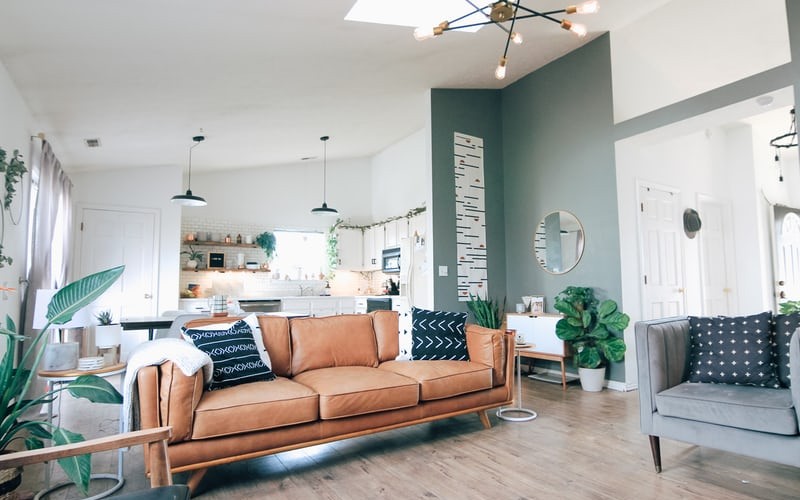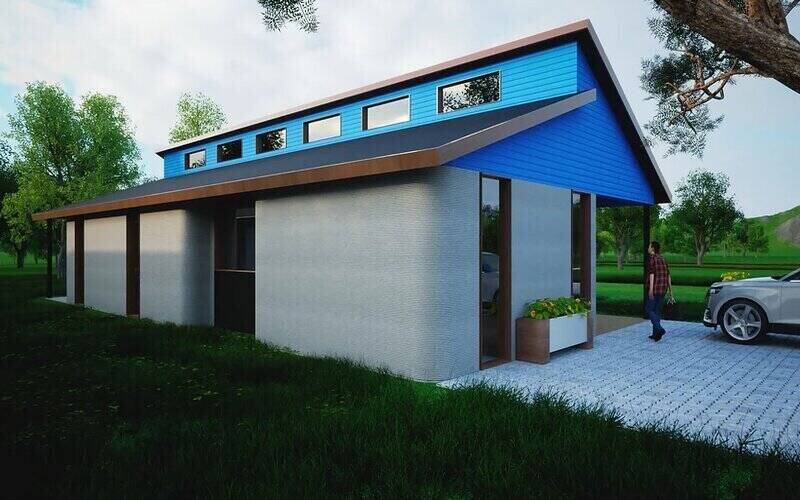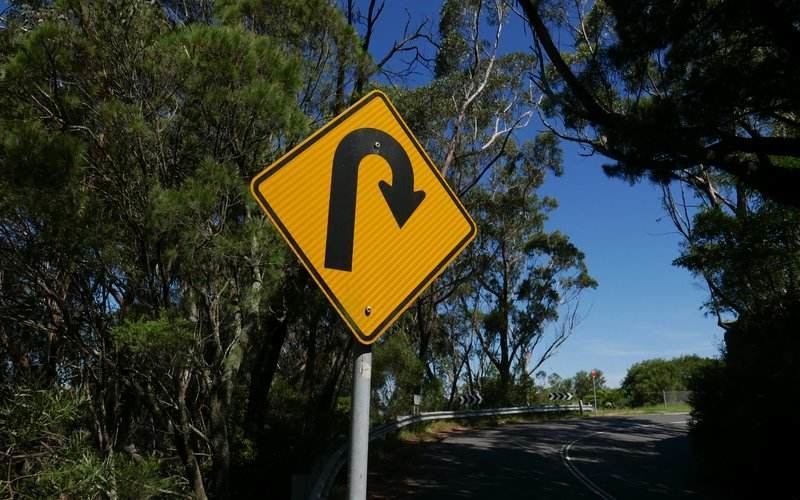Whether you want to lower your mortgage repayments, move to a smaller home or one with less maintenance, free up some money for your retirement, or move to a new area offering better affordability, downsizing could be a good solution.
But what exactly is downsizing and how can it work for you?
What is downsizing?
It may sound self-explanatory, but downsizing is not just selling your home to buy a smaller one. That is certainly one type of downsizing - physical downsizing - but there is also another type: financial downsizing. It typically involves selling a home and buying another that costs you less.
In both cases, downsizing involves the sale of your property and the purchase of a new one. There are many ways this can work to your advantage so let’s see what’s entailed with both.
Physical downsizing
Physical downsizing to something 'smaller’ can be moving to a home with fewer bedrooms, or it could be a smaller block with less garden and yard space to maintain. A common example of physical downsizing is when a couple sells the family home and moves to an apartment once their children have moved out and they no longer need the space.
Financial downsizing
Financial downsizing doesn’t have to equate with a physical downsize. It involves selling your current home and buying a less expensive one, and less expensive homes don’t necessarily mean smaller ones. For example, a couple looking to retire might sell their medium-sized suburban home in a major city and move to a regional area with a quiet beach. The house itself might be larger than their previous one, but the cost of property in the new area is much less than the value of their city home.
This same concept can also apply to renters who choose to move to a cheaper property or a cheaper area for rentals.
Why downsize?
The Australian Housing and Urban Research Institute conducted a comprehensive study into downsizing among the 55-plus age group in 2020. It found the most common reasons for downsizing were:
-
lifestyle (27%)
-
financial (27%)
-
too much maintenance (18%)
-
‘forced' to move (15%)
Its survey of 2,422 older Australians found over a quarter (26%) had already downsized and a further 29% were considering it. The research concluded households on low or very low incomes were more likely to have downsized than those on higher incomes. It also found those who had already downsized were less likely to be in ownership of their homes.
Researcher Amity James from Curtin University said financial considerations are a significant factor in downsizing decisions.
"While downsizing may include a reduction in dwelling size, to older Australians it points to a housing aspiration where the internal and outdoor spaces are manageable, and represents a financial benefit," Dr James said.
"Australian governments typically see downsizing, or rightsizing, as a way to use housing stock more efficiently, with downsizers reducing the number of bedrooms in their dwelling, freeing up larger dwellings.”
But while there are some clear benefits associated with downsizing, it’s not without its pitfalls. Let’s consider them.
Pros and cons of downsizing
What are the advantages of downsizing?
-
It can free up tens if not hundreds of thousands of dollars from the sale of your home, which can be used for paying off a mortgage, investing, funding your retirement, or anything you want
-
There are government incentives to do so (see below)
-
You can move to a home that’s more suitable for your lifestyle, such as one that’s easier to maintain
-
You can move to a better location - ‘beachside holiday living’, ‘urban convenience’, and ‘relaxed rural setting' are popular options, according to a survey by specialist property and retirement website Downsizing.com.au
-
Smaller or more affordable houses can also mean cheaper insurance and utility bills, as well as lower council rates and mortgage repayments
-
It can improve accessibility and mobility issues for older residents
-
It can free up your time - less home maintenance can mean more free time for your own pursuits
-
You help free up housing supply for younger buyers, or potentially family members
What are the downsides of downsizing?
-
A smaller home might not be as good as your previous home, or you might not like a new area you buy into
-
You may mourn the emotional connection you had to your previous home
-
You have to pay the many fees associated with selling a property
-
You may not like living with less space, less storage, or less privacy, particularly if you move into an apartment or townhouse after living in a standalone house
-
Selling your home could reduce your age pension. The more money you have in income or assets outside of the family home, the less age pension you’ll be eligible for
Making downsizer contributions into superannuation
In the 2017–18 Budget, the federal government announced the downsizer super contributions scheme allowing older Australians to contribute up to $300,000 into their super ($600,000 for couples) from the sale of their homes. The scheme was originally for people aged over 65 but since then, the ages have lowered.
As at June 2024, the eligibility requirements for downsizer superannuation contributors are:
-
From 1 January 2023, 55 years or older
-
From 1 July 2022, 60 years or older
-
From 1 July 2018, 65 years or older
These non-concessional (after-tax income) contributions don’t count towards regular super contribution caps and don’t even require you to downsize to a smaller or cheaper property.
Contributions through this scheme:
-
Must be made within 90 days of the sale
-
Can only be made for the sale of one home
-
Only apply if you or your spouse owned the property for 10 years prior to selling and it was your main residence
Under the scheme, downsizing to a cheaper home, or buying a different one, could add hundreds of thousands of extra dollars to your retirement balance, which may be more than enough to ensure you can retire in financial comfort.
In the scheme’s first five years, around 60,000 downsizers had taken advantage, contributing around $14.5 billion into superannuation. Calculations based on average super fund returns over the past decade estimate these downsizers stand to receive an extra $20,000 a year in their retirement incomes.
Related: Should you pay off a mortgage with super before you retire?
Stamp duty discounts for downsizing
Some Australian states and territories provide stamp duty exemptions or discounts specifically for eligible downsizers purchasing homes of lesser value. Others offer discounts to eligible pensioners while some grant exemptions or concessions to people buying off-the-plan apartments or townhouses that downsizers can take advantage of. Here is a rundown of the current offerings:
|
State/territory |
Exemptions/concessions |
|---|---|
|
New South Wales |
n/a |
|
One-off stamp duty exemption for purchase of principal place of residence properties valued up to $330,000 with scaled discounts for values up to $750,000 for eligible pensioners |
|
|
Queensland |
n/a |
|
Exemptions and concessions for purchase of off-the-plan units or apartments, both pre-construction and under construction, depending on value (see link for scaled home values and time periods) |
|
|
South Australia |
n/a |
|
50% stamp duty discount on Tasmanian properties valued up to $600,000 for eligible pensioners who downsize to a home of lesser value (see link for scaled home values and time periods) |
|
|
Stamp duty exemption for eligible pensioners purchasing properties valued up to $550,000 with scaled discounts for values up to $765,000 (see link for scaled home values and time periods) Also, exemptions for people purchasing ‘off-the-plan’ apartments and townhouses valued up to $800,000 Deferral of conveyance duty also available for eligible pensioners under the Pension Duty Deferral Scheme |
|
|
Northern Territory |
Stamp duty concessions for seniors and pensioners for purchase contracts signed on or after 1 July 2021. Eligible purchasers before that date can still apply. |
Information current as at June 2024
Competitive home loans for downsizers
If you’re looking to downsize, table below features home loans with some of the lowest interest rates on the market for owner-occupiers.
| Lender | Home Loan | Interest Rate | Comparison Rate* | Monthly Repayment | Repayment type | Rate Type | Offset | Redraw | Ongoing Fees | Upfront Fees | Max LVR | Lump Sum Repayment | Additional Repayments | Split Loan Option | Tags | Row Tags | Features | Link | Compare | Promoted Product | Disclosure |
|---|---|---|---|---|---|---|---|---|---|---|---|---|---|---|---|---|---|---|---|---|---|
5.79% p.a. | 5.83% p.a. | $2,931 | Principal & Interest | Variable | $0 | $530 | 90% |
| Promoted | Disclosure | |||||||||||
5.74% p.a. | 5.65% p.a. | $2,915 | Principal & Interest | Variable | $0 | $0 | 80% |
| Promoted | Disclosure | |||||||||||
5.84% p.a. | 6.08% p.a. | $2,947 | Principal & Interest | Variable | $250 | $250 | 60% |
| Promoted | Disclosure |
How to downsize
Before you begin to consider your options, it’s strongly advised you speak to a financial planner or an accountant as to how downsizing might impact your finances. Although downsizing might sound like it will free up funds, you’ll also need to consider:
-
The cost to sell and buy the properties
-
Whether downsizing will pay off your mortgage if you still have one, or whether you will still have a mortgage after you downsize
-
The potential impact on any age pension payments or future age pension eligibility
-
Whether you can use the downsizer superannuation contribution scheme, or whether any funds released from downsizing to a less expensive home could be put into other investments
-
The financial implications of buying into a retirement community or similar over-55 lifestyle facility
Top tips for downsizing your home in Australia
Once you’re clear on your options, downsizing requires the usual due diligence that comes with buying any home. You’ll need to:
-
Research properties and locations to find one that suits you
-
Consider the type of property that will meet your needs and that you can best afford
-
Determine if you can comfortably meet the ongoing costs (council rates, energy bills, insurance, retirement community fees, etc.)
-
Start decluttering as soon as you can. Not only will this make your home more presentable when it comes to selling but there’ll be less to move into your new home (particularly handy if it’s considerably smaller)
-
Get a professional property valuation and find a good, reputable real estate agent
-
Prepare your home for sale. This may mean spending money to do cosmetic work or maintenance to boost your home’s final sale price
-
Consider appointing a buyers' agent to help you with the search for your new home, otherwise start familiarising yourself with areas, property values, and attending open homes yourself
-
Keep an eye on costs and make sure you’re not paying too much for agents' fees, conveyancer or legal costs, removalists, and more
-
Take full advantage of government incentives such as stamp duty exemptions or discounts and the $300,000 downsizer superannuation scheme
What are some alternatives to downsizing?
If you’ve looked at the options and have decided downsizing isn’t for you at the current time or there are more cons than pros for your situation, you might like to consider some alternative approaches.
If you have too many spare rooms that aren’t being put to use, you may not need to sell your home because of all that extra space. You can rent out that spare room through Airbnb or other short-stay platforms and make some extra cash out of it - if you don’t mind sharing.
Before you do that though, just be aware of the tax implications of doing so. In general terms, if you’re just renting out rooms while you’re still living in the house, you may be able to claim some deductions against the rental income you earn. However, you’ll likely also be up for some capital gains tax when you sell, even though the home is your principal place of residence. Some local councils also have rules covering short-stay rentals that may affect your rates and other charges.
If you don’t want to rent rooms out to total strangers, then you could also consider house sharing with friends or family, particularly if you have children or younger relatives who want to save up for their own properties.
Rentvesting is another option you can consider. This allows you to turn your current home into an investment property by renting it out while renting a property for yourself in a more desirable area. This can be a good option if you want to have a trial run of moving to a new area or into a smaller place before you take the leap of selling your home. You may also be able to take advantage of the six-year rule which allows you to rent out your principal place of residence for up to six years and avoid paying capital gains tax when you sell it. Seeking advice from your accountant or tax advisor is your best bet here.
If it’s cash you’re after, there’s also the option of potentially releasing some of the equity in your home through a product like a reverse mortgage, which allows you to borrow money using the equity in your home as security on the loan. You can pay this off later when you eventually sell the property at a later time.
Related article: Reverse mortgages - a misunderstood product?
A qualified financial adviser or an accountant can steer you on the right path to suit your individual circumstances.
Savings.com.au’s two cents
Downsizing might not necessarily be the best word to describe the process of selling your home for something that better meets your needs - rightsizing is the newer buzzword in this sector of the homebuyer market. In any case, it’s a good way to move into a more practical or more affordable property or both, and it doesn’t have to happen when you’re old.
Downsizing (or rightsizing) is a good strategy to free up funds at any age and is also a viable option for renters. Just because you’re downsizing that doesn’t mean you need to live in a granny flat or a tiny house either. It may mean moving to a different area where you get more bang for your buck.
You shouldn’t feel forced into downsizing if you don’t want to but, by the same token, don’t leave it too late so that your options become limited. This rarely leads to the best outcome. It can be extremely difficult but try to take emotions out of the decision and do what’s most practical for your future. Getting good financial advice can be the best decision you make before considering all your options.
Photo by Cara Fuller on Unsplash

Ready, Set, Buy!
Learn everything you need to know about buying property – from choosing the right property and home loan, to the purchasing process, tips to save money and more!
With bonus Q&A sheet and Crossword!






 Harrison Astbury
Harrison Astbury
 Hanan Dervisevic
Hanan Dervisevic













